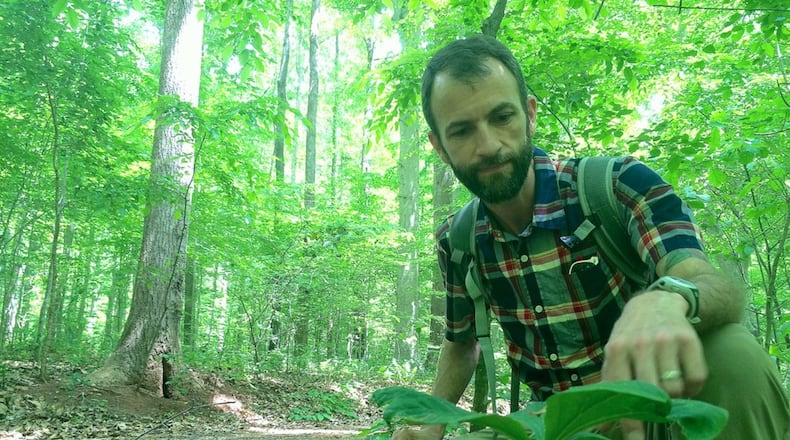Eli Dickerson stalked the shaded walkway, a predator.
"There." He pointed into the gloom of Fernbank Forest where a tangle of greenery carpeted a hill. "English ivy."
Only an ecologist can spit out those two words and make them sound like something nasty. In truth, the ivy is sort of nasty — an invasive species on which Dickerson and others have been waging war for more than a year. In this regard, he and others are turning the tide on plants that for years have threatened the Atlanta forest.
If all goes according to plan, that battle may subside later this year. Then, the forest in Druid Hills will reopen to the general public.
Fernbank Forest, a 65-acre treasure, has been the site of a four-year effort to remove English ivy and an estimated 40 other invasive plants. Their removal will clear the way for orchids, trout lilies, foamflower, bloodroot, doghobble, wild geranium and trillium to regain the spots they've held for millennia. The Fernbank Museum of Natural History, which owns the wood, is in charge of the project.
On a recent forest ramble, Dickerson, a museum employee, pointed out what’s gone; what will be removed; and what will remain.
He paused at a slope where the daughter of the man who owned the site more than a century ago coined the forest’s name. Then, it had been covered with ferns. In recent years, it had succumbed to invasive plants that threatened to choke out trees and smaller growth.
In 2012, crews began removing those unwanted plants in earnest. Now, the slope hosts a healthier forest, with sun illuminating some spots where the ground is bare.
“Just because something is green,” he said, “doesn’t mean it’s good.”
Crews working in the forest have removed a mountain of unwanted vines and creepers, an estimated 30,000 cubic feet taken from about 25 acres. The work has been focused on the forest trail and along the forest’s borders, where invasive species have crept from neighboring yards.
Fernbank, he said, has an agreement with 12 homeowners whose property touches the forest: Remove your invasives and you’ll get a free pass to the museum.
He paused atop a hill. Forty feet below, Fernbank Creek twisted in its banks, a flash of silver against green.
“A year ago, you couldn’t see it,” he said.
A few steps more, he stopped again. Young ferns shoved their leaves out of the ground — the same space, he said, that invasives carpeted a year before.
“We didn’t know what was there until we started taking the bad things out,” he said.
To get them out, Fernbank in 2012 closed the forest to unguided tours. This prompted an online petition and a handful of protests outside the forest's locked gates.
If eradication efforts go as planned, the museum hopes to reopen the forest later this year.
The museum will always have to keep an eye on unwanted ivy and other species that don’t belong in the forest’s rolling reaches, he said.
“We’ll never stop” the fight against invasives, he said. “But this is an improvement.”
About the Author
Keep Reading
The Latest
Featured



